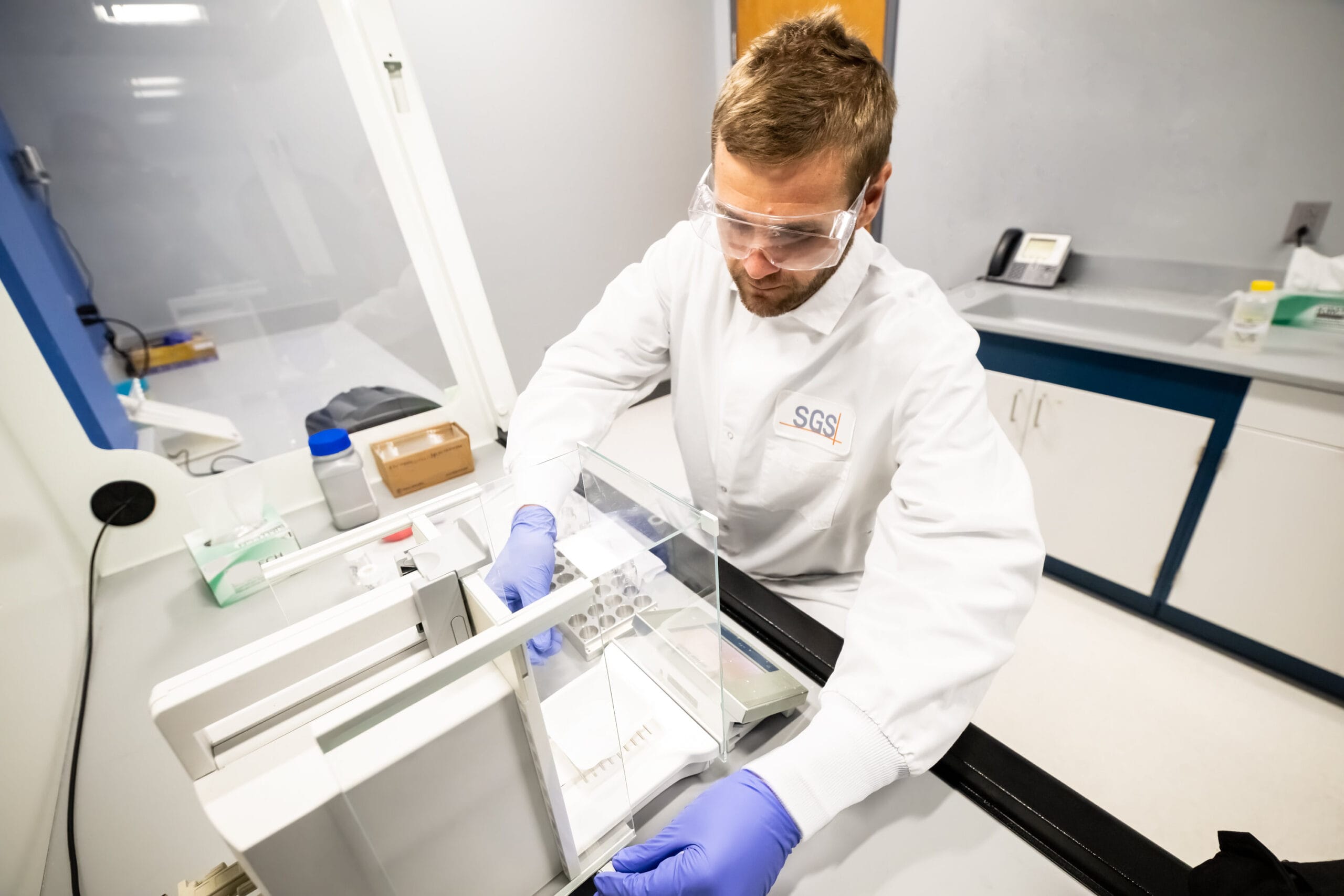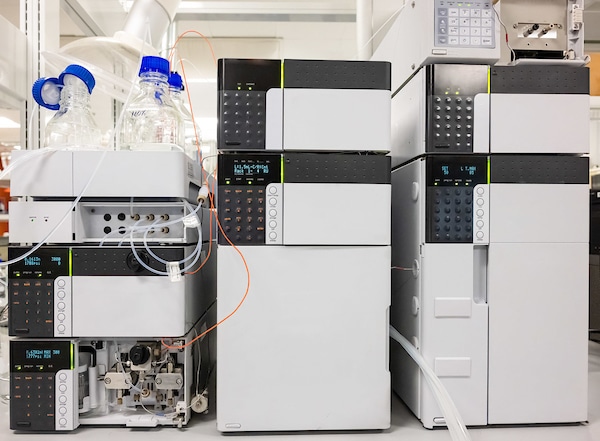
Chromatography
High Performance Liquid Chromatography (HPLC) is an analytical technique used for separation and quantification of semi-volatile and non-volatile compounds.
Molecules in solution are separated based on interactions with the stationary phase of the column and are detected using a variety of methods. HPLC is the method of choice for testing complex mixtures containing both non-volatile and semi-volatile compounds such as polymer additives, active pharmaceutical ingredients (API’s) and impurities.
Approaches
- Ultraviolet/Visible Absorbance (UV/Vis)
- Photodiode Array (PDA)
- Refractive Index (RI)
- Evaporative Light Scattering (ELSD)
- Fluorescence
- Mass Spectrometry (LC-MS)

Sample Considerations
HPLC is applicable to solid or liquid samples.
Samples must be dissolved or diluted or extracted with an appropriate solvent prior to HPLC analysis.
Sample cleanup or enrichment using solid-phase extraction (SPE) may be employed before HPLC analysis.
Derivatization of the target compound(s) may be required to attach chromophores that absorb UV or visible light.
Experience
Examples of our experience with High Performance Liquid Chromatography (HPLC):
- Identification and quantification of antioxidants, UV absorbers, and hindered amine light stabilizers (HALS) in plastics
- HPLC method development
- HPLC method validation
- GMP compliance testing according to compendial methods (USP and EC)
- Assay and purity testing of API’s and excipients
- Analysis of glycerol monostearate (GMS) concentration in polypropylene films and molded parts
- Formaldehyde emission testing of products
- Competitor product analysis (deformulation)
- Migration testing for food contact approval
- Analysis of photoinitiator leaching from syringe labels
